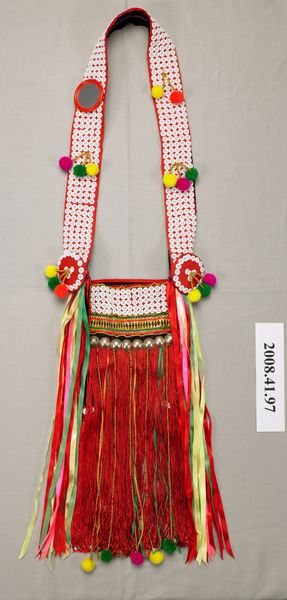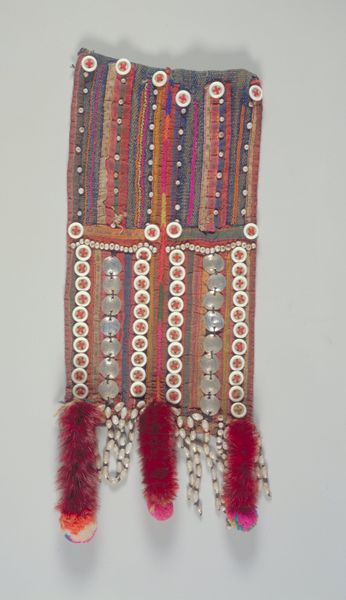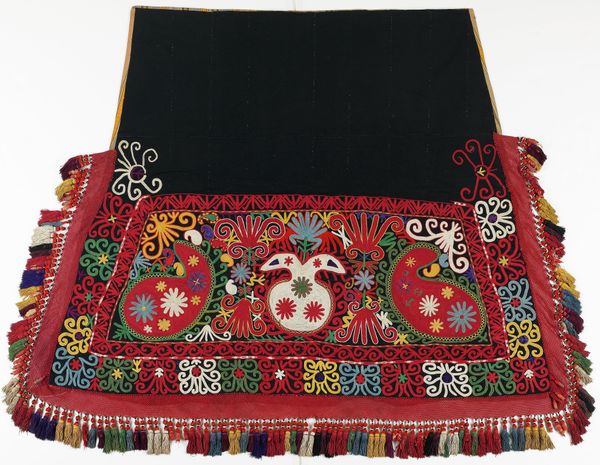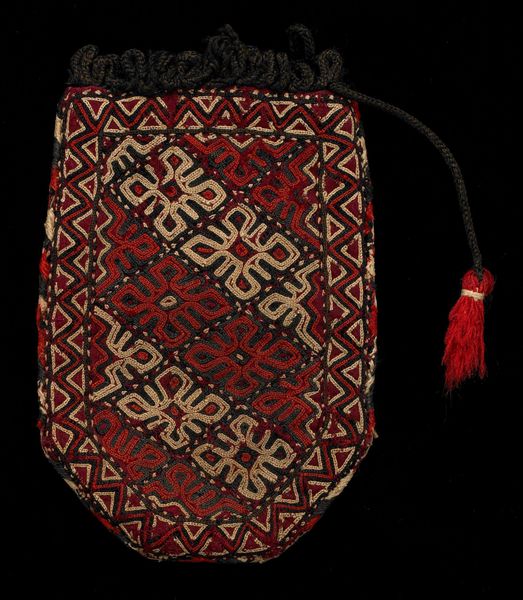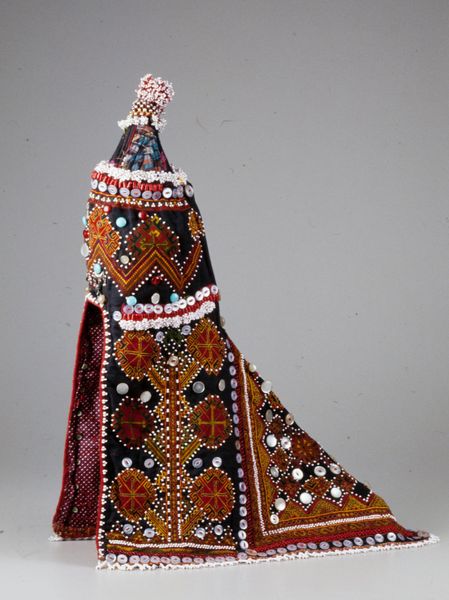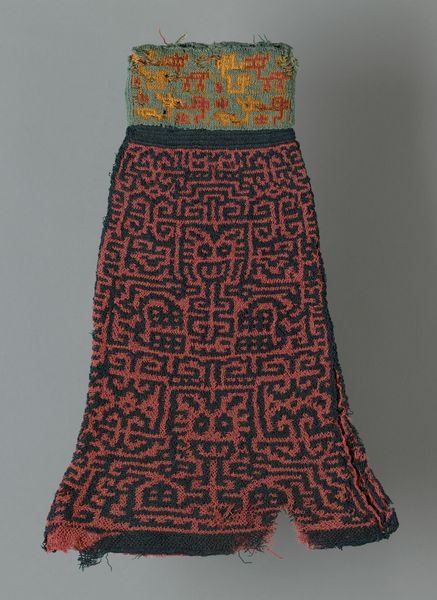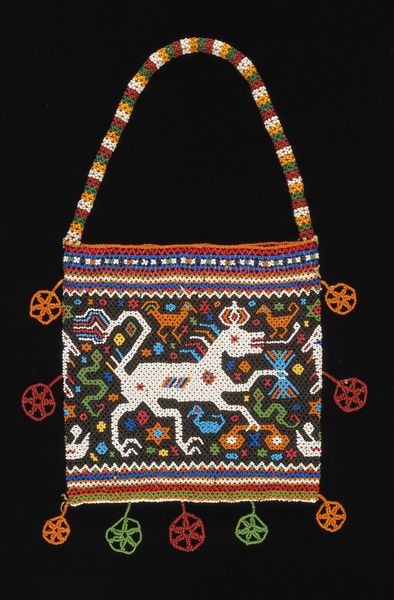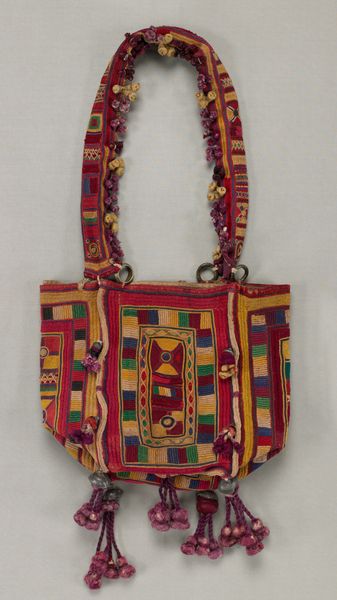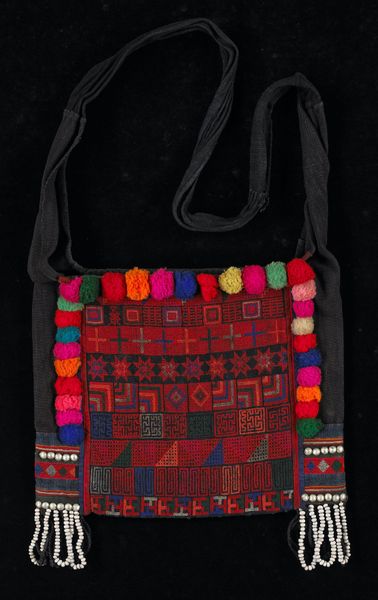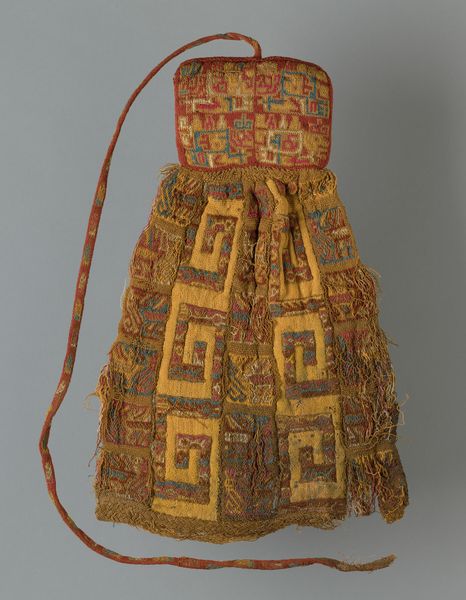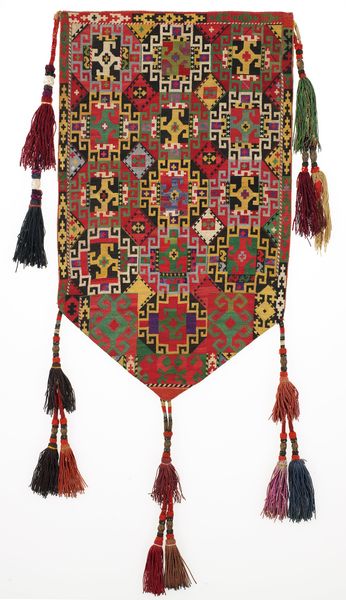
fibre-art, textile
#
fibre-art
#
textile
#
fashion and textile design
#
wearable design
#
geometric
#
textile design
#
decorative-art
#
indigenous-americas
Dimensions: 12 1/4 × 26 1/2 in. (31.12 × 67.31 cm) (with tassels and cord)
Copyright: Public Domain
This is a Firebag, made by the Nēhiyawak, or Cree, peoples of North America. The bag is made of cloth and decorated with beads, quillwork and tassels. Bags like this, made during the 19th century, were used to carry sacred items such as tobacco and ceremonial pipes, and were often given as gifts to cement social bonds. The designs take root in the natural world, rendered in abstract geometric forms. The Cree were among the first Indigenous peoples to encounter European colonizers, and their history is one of complex negotiation with colonial power. This bag can tell us something about the visual strategies employed by Indigenous artists to assert their cultural identity, even as their traditional ways of life came under pressure. As historians, we can use museum collections, archives, and oral histories to understand the social and political context in which objects like this were made, reminding us that works of art are always shaped by the world around them.
Comments
minneapolisinstituteofart about 2 years ago
⋮
In the early 1800s, a particular kind of elaborately beaded bag—a firebag—captured the imagination of Native women artists in the Subarctic, the Northern Plains, and some coastal regions of the Pacific Northwest. Firebags were made to store tobacco and flint, and are also known as Octopus Bags, a reference to their dangling, tentacle-like tabs at the base of the pouch. This particular firebag displays beadwork similar to that of the Dakhóta, Metis, and Cree peoples, known for their skillful use of tiny beads, with a bold central design and subtle floral motifs on red wool. In addition to the very fine beaded work that frames the piece, there are two beaded eagle designs on the back of the bag, making it unique.
Join the conversation
Join millions of artists and users on Artera today and experience the ultimate creative platform.
